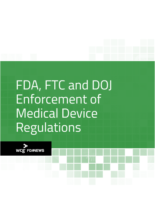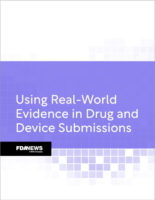
Home » FDA Settles Safety Report Rules for Combination Products after Seven Years
FDA Settles Safety Report Rules for Combination Products after Seven Years
For products that include a device component, sponsors must submit five-day reports, with supplemental or follow-up reports; malfunction reports; and correction or removal reports, as well as comply with recordkeeping requirements.
The FDA said that correction and removal reporting requirements sometimes arise in relation to manufacturers’ recalls after adverse events that may also trigger medical device reporting requirements. In such cases, a medical device report will suffice to comply with both sets of reporting requirements.
In a change from the 2009 proposed rule, the agency extended 15-day report requirements for products approved under device applications to 30 days.
Sponsors are not required to submit more than one report, the agency said, as long as a single document contains all required information and meets applicable deadlines.
Sponsors of different parts of a combination product must share safety information with each other within five calendar days, including events involving death, serious injury or other adverse events.
Overall, the rule applies only to combination product applicants and constituent part applicants. In response to several comments asking for clarification on the entities and products subject to the rule, the FDA provided an example of a prefilled syringe that received authorization via an NDA submitted by Company A, which purchases syringe components from Company B. Company A is the only entity applying for combination product approval; Company B would have no postmarket reporting duties under this rule.
The rule does not require blood fatality reporting for combination products that received marketing authorization under a device application.
Combination product applicants must maintain records relating to their postmarket safety reports for the longest required recordkeeping period applicable to the combination product: at this time, the recordkeeping period for combination product records would be at least 10 years, the FDA said.
The rule largely goes into effect Jan. 20, 2017, as many duties for both combination product and constituent part applicants are generally the same for any application holder already in compliance. However, the additional reporting requirements based on individual product components, as well as certain periodic reports and the requirements for related companies to share safety information will take effect 18 months later, in July 2018. The FDA said it intends to publish a guidance in the future providing recommendations on complying with this rule.
The FDA says combination product manufacturers have two options for GMP compliance: satisfy all device and drug GMPs, or implement a streamlined quality system that focuses primarily on one but incorporates elements of the other. Combination Products cGMP Compliance will guide manufacturers in developing a strategy that makes not only good compliance sense but also good business sense.
Upcoming Events
-
07May
-
14May
-
30May

